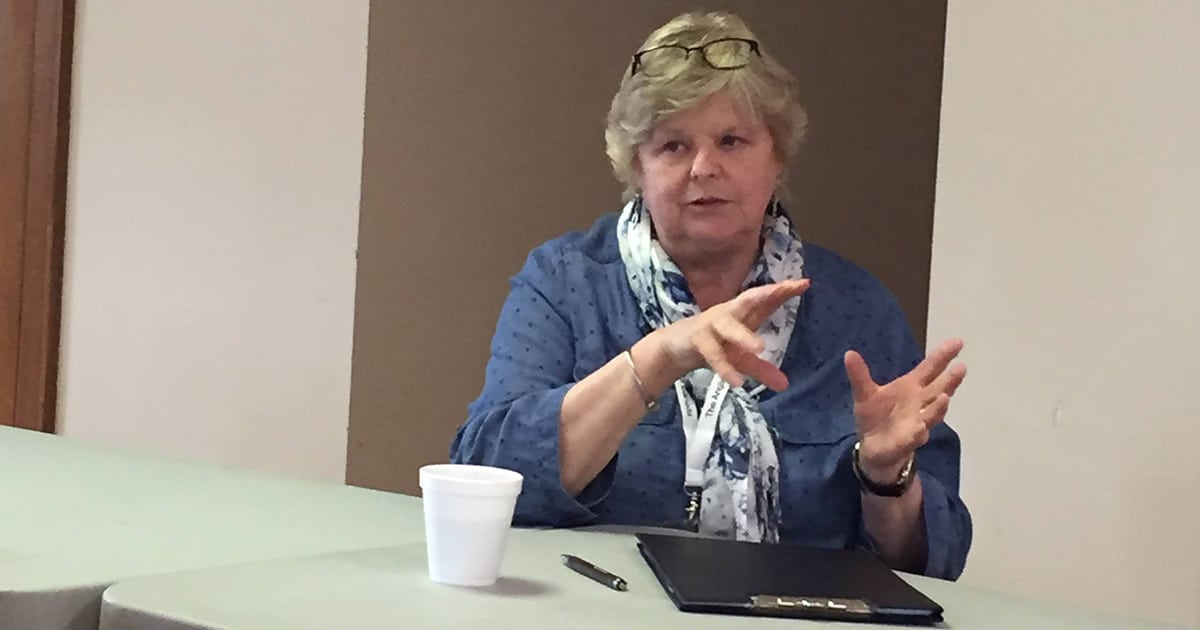The following is part of an ongoing monthly series on congregational development, which features reflections from Anglicans on how they are responding to the challenges facing churches today.
In a constantly changing world, the basic premise of congregational development today remains largely unchanged, according to the Rev. Lynn Uzans.
For Uzans—currently serving as transition minister at First Baptist Church in Halifax and on a part-time basis as vocations coordinator for the Anglican Diocese of Nova Scotia and Prince Edward Island—congregational development still means “helping people who have been put together in a parish or congregation discover who they are, and what God is calling them to do.”
For a congregation to effectively carry out its mission, however, it must maintain a spirit of self-examination and flexibility that allows it to continually respond to new challenges. Throughout her experience as a minister, Uzans has adopted various models for development, and is a strong supporter of the Healthy Church Handbook, among other tools.
“At the bottom line, I think there are all kinds of really good tools out there,” Uzans said. “But they’re only tools, and they’re tools to get people talking…always asking the question, ‘What’s this about? What’s the end goal here?’
“Is it to keep stuff going that you’ve always had, or is it that what you’ve always had isn’t working and we need to try something new? I realize that change is very difficult for people, but at some point, it’s also about change management, and constantly helping people see that change is not terrifying.”
Uzans’ approach to congregational development emerged from her training in active listening and pastoral care. In helping congregations determine how to move forward, she has continually emphasized self-reflection rooted in prayer.
During her time serving as a minister at St. James’ Anglican Church in Kentville, N.S., when the parish knew that repairs to its sanctuary costing tens of thousands of dollars were necessary, Uzans helped organize a town hall meeting in which members brainstormed all possible options, such as repurposing the space.
“At one point, I said, ‘We’re in the middle of an agricultural area, so what if we turned our sanctuary space into a year-round farmers’ market and carved out a chapel for perpetual agriculture?’” she recalled.
“People kind of looked at me like I had three heads, but it freed people up to say, ‘How can we think outside the box?’”
Parish members put all their ideas on flip-chart sheets, looked at the pros and cons of each, and left the sheets up for a month. After additional meetings, the congregation held a secret ballot asking what God was calling them to do. To the surprise of some, the result indicated that the parish believed God was calling them to repair the sanctuary.
St. James congregation thus started making repairs to the sanctuary. Unexpected assistance from an insurance company meant that the repairs ultimately cost only $5,000.
“We didn’t know that when we went into the decision,” Uzans said. “But I think what happened with that congregation was that they discovered that they could have a prayerful approach to decision-making, and that then spilled over into other congregational development…[the prevalent sentiment being], ‘If we could trust God on this, how else might we be able to trust God?’”
Whether in “kitchen table” discussions for smaller parishes or in a more standardized assessment process for larger parishes, congregational development for Uzans involves answering a number of basic questions: “Who are the people? Where are they located? What are they being called to do, and how can we be equipped to do that? And that’s going to look different for every congregation.”
The Diocese of Nova Scotia and Prince Edward Island currently has a parish vitality coordinator, the Rev. Lisa Vaughan, who works with individual parishes using various congregational tools, Uzans noted.
Though some parishes in the diocese have looked at natural church development as a model for development, she said, “My feeling about natural church development is that it requires a numerically larger congregation than many of our congregations in Nova Scotia and Prince Edward Island, so it hasn’t been a model we’ve looked at a lot.”
Interested in keeping up-to-date on news, opinion, events and resources from the Anglican Church of Canada? Sign up for our email alerts .

